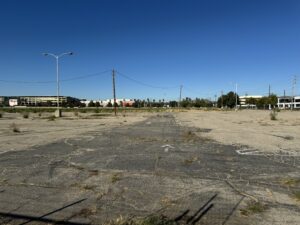
Nestled in the heart of Canoga Park, California, Rocketdyne has a rich history of aerospace engineering and technological advancements. This sprawling forty-six-acre lot has been at the forefront of rocket propulsion systems, pivotal in developing the Saturn rockets and missiles. Formerly, Rocketdyne’s legacy lives on through its historical significance and transforming its land into a potential hub for real estate development.
The History of Rocketdyne in Canoga Park
Dating back to 1955, the North American Aviation Division established Rocketdyne. The company primarily focused on developing rocket engines and propulsion systems for military and civilian applications. Over the years, Rocketdyne became synonymous with innovation and contributed crucially to shaping the future of space exploration.
The Saturn Rockets and Missiles
One of Rocketdyne’s most notable achievements was its contribution to the Saturn rocket program. These powerful rockets played a vital role in NASA’s Apollo missions, including the historic Apollo 11 moon landing. Rocketdyne’s F-1 engines, which powered the first stage of the Saturn V rocket, were the largest single-chamber liquid-fueled rocket engines ever built. Therefore this groundbreaking technology propelled humanity beyond Earth’s atmosphere and into space exploration. In addition to the Saturn rockets, Rocketdyne also developed advanced missile systems for military applications. These missiles, such as the Thor and Jupiter, played a crucial role in the Cold War era, ensuring the nation’s security and defense.
The Buildings of Rocketdyne in Canoga Park
The Rocketdyne complex in Canoga Park comprises several buildings that have witnessed decades of groundbreaking research and development. These structures were the birthplace of technological advancements that shaped the aerospace industry. From testing facilities to manufacturing plants, each building contributed to producing and refining rocket engines and propulsion systems. There were tunnels connecting head quarters to buildings on Victory Avenue and Canoga Avenue. Comparatively, there were twenty seven buildings on one hundred and nineteen acres originally, which shrank from property sales. After the Apollo program ending in 2011, more buildings were demolished, the acreage shrank to forty six acres.
The Use of the Land and Cleanup Efforts
Rocketdyne’s operations in Canoga Park eventually ceased in the late 1990s as the aerospace industry evolved. However, Rocketdyne’s presence left behind a complex environmental challenge. Markedly, the land required extensive cleanup efforts due to hazardous materials and contaminants. Subsequently a collaborative effort between Rocketdyne, local authorities, and environmental agencies, a comprehensive cleanup plan was implemented. The remediation process ensured the removal of contaminants and the restoration of the land to meet environmental standards. This cleanup effort addressed the environmental concerns and paved the way for the land’s potential future use.
 Real Estate Potential
Real Estate Potential
With the successful cleanup of the Rocketdyne site, the land now holds immense potential for real estate development. Its strategic location, nestled in the heart of Canoga Park, makes it an attractive prospect for investors and developers. The sprawling complex offers ample space for mixed-use developments, including residential, commercial, and recreational facilities. The transformation of the Rocketdyne site into a vibrant real estate hub would revitalize the local economy and pay homage to the rich history of aerospace engineering. The integration of historical elements into the development plans could serve as a reminder of the groundbreaking achievements on this land.
Closing thoughts
Rocketdyne’s presence in Canoga Park has left an indelible mark on the aerospace industry and the community. Rocketdyne’s legacy continues to inspire and shape the future, from its contribution to the Saturn rockets and missiles to the successful cleanup and potential for real estate development. As the world continues to explore new frontiers, the story of Rocketdyne serves as a reminder of the human spirit’s boundless potential and the transformative power of innovation.
